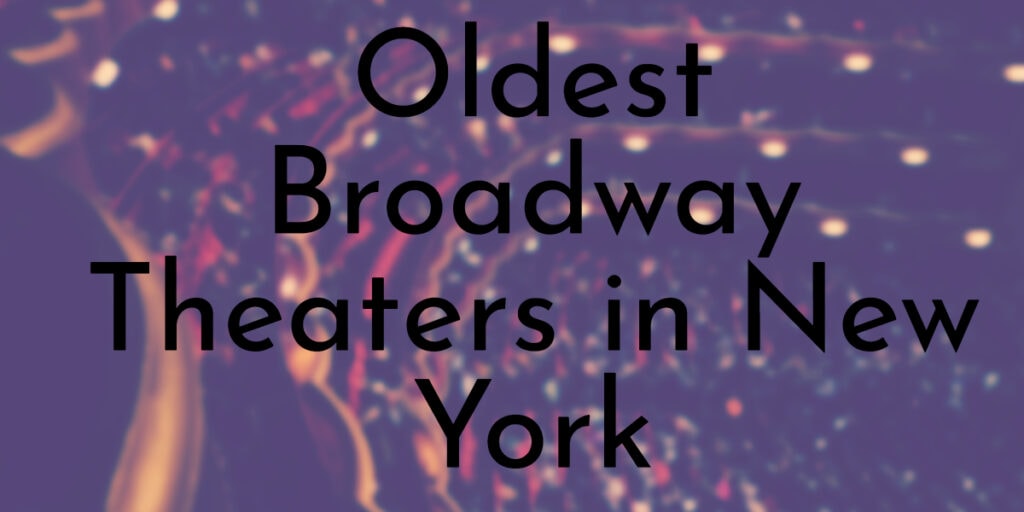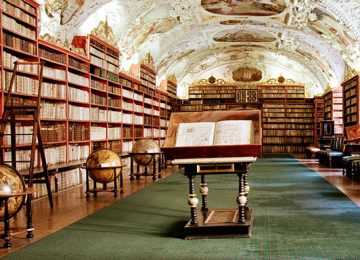Broadway is the home of some of the world’s biggest musical productions. Broadway theaters have been a part of New York City since its inception and have become a part of its culture. These theaters are known for their extravagant sets, elaborate costumes and lighting, and high quality performances by actors.
Broadway theaters also have a reputation for being extremely expensive to operate, so they make up just a small percentage of theater venues in New York City.
Theater lovers have always been taken with Broadway theaters. These venues have long been the center of entertainment for many people, and have played host to some of history’s most famous plays and musicals. They’ve also provided a place for aspiring actors to hone their craft and make their mark on the world stage.
If you’re an avid theatergoer who likes to see shows like Cats (or any other show), then there’s no reason why you should not continue reading this article as we show you ten of the oldest Broadway theaters in New York.
10. Longacre Theater
Date Established: May 1, 1913
Location: 220 West 48th Street Manhattan
Capacity: 1,077
Owned/Operated By: The Shubert Organization
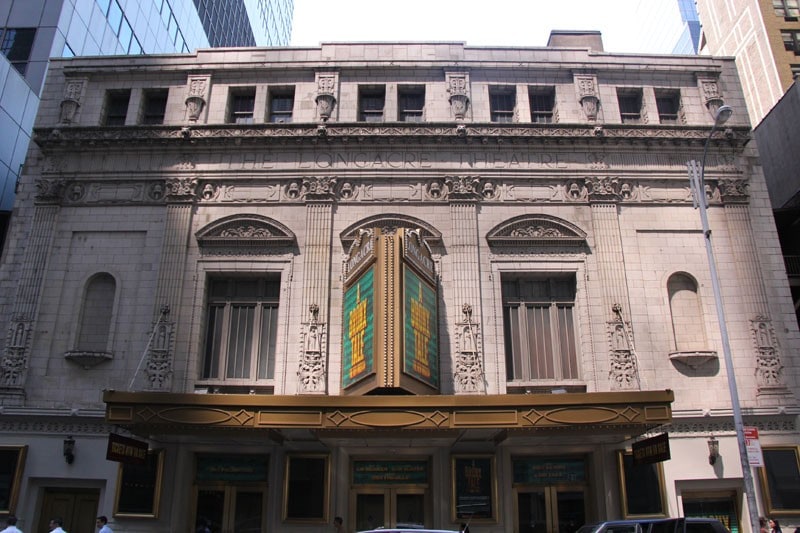
Producer/manager HH constructed the Longacre, which takes its name from Longacre Square. Frazee. The theater changed ownership many times after Frazee experienced financial troubles until being purchased by Astor Theater Incorporated, a Shubert affiliate, in 1919.
Although it has a French Neo-classical facade and a Beaux Arts interior, Herts’ other designs lacked some of its distinctiveness and flare. The theater underwent a multimillion dollar renovation in 2007–2008 under the direction of architect Michael Kostow, who also expanded the facilities for patrons, enhanced sightlines, and cleaned and repaired the neo-classical external facade.
Did You Know?
Due to objections from stagehand unions, the Federal Theater Project of the Works Progress Administration (WPA) decided not to rent the Longacre in 1936.
9. Palace Theater
Date Established: March 24, 1913
Location: 1564 Broadway Manhattan
Capacity: 1,743
Owned/Operated By: Nederlander Organization and Stewart F. Lane
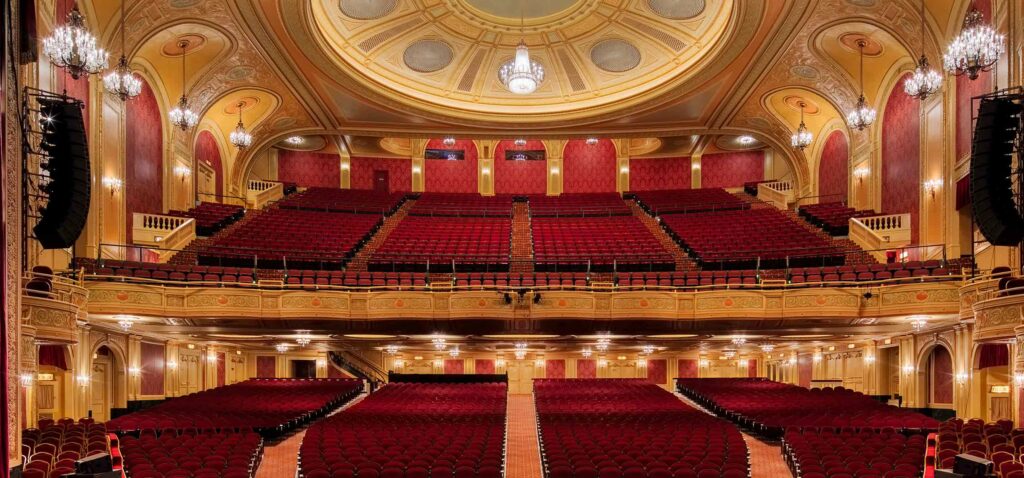
On March 24, 1913, a vaudeville theater opened its doors as the Palace Theater in New York City, which is credited for essentially inspiring them all.It was in 1929, a year that was significant in many ways that saw the theater being wired for sound movies.
Additionally, the Neo-Classical and Adam eras would be combined in the palace theater. It had a very straightforward design that made no attempt to predict the movie palaces that would follow, and it was distinguished by moldings like fruit festoons and bead-and-reel to highlight the panels into which the walls and ceiling were split.
It has recently played host to popular musicals and long-running Disney stage productions. SpongeBob SquarePants, a musical, was the last production to take place in the theater at its original site, and it ended on September 15, 2018.
Did You Know?
The theater is purportedly inhabited by the ghost of acrobat Louis Bossalina.
8. Hayes Theater
Date Established: March 12, 1912
Location: 240 West 44th Street Manhattan
Capacity: 597
Owned/Operated By: Second Stage Theater
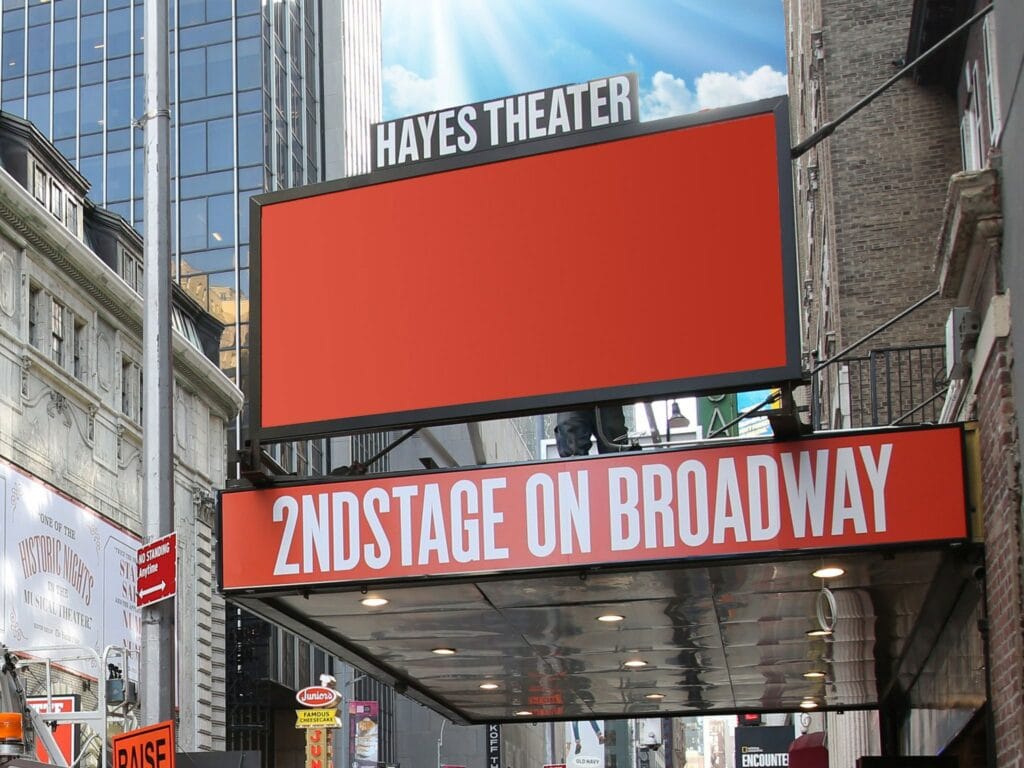
Ingalls & Hoffman created the Helen Hayes, which first debuted in 1912 as the Little Theater. It was originally just 299 seats, but it was subsequently increased to 597 seats. Despite this, it is still the smallest Broadway theater.
As a memorial to the actress and the old Helen Hayes Theater, which had been destroyed the year before, the theater was renamed the Helen Hayes in 1983.
The Helen Hayes Theater, which was renamed in 1983 in honor of the legendary “First Lady of American Theater,” continues to be the smallest theater on Broadway and is the ideal setting for the work that Second Stage creates.
Did You Know?
On November 3, 2021, Hayes reopened with Clyde’s by Lynn Nottage in previews following the COVID 19 upsurge.
7. James Earl Jones Theater
Date Established: December 20, 1912
Location: 138 West 48th Street Manhattan
Capacity: 1,092
Owned/Operated By: The Shubert Organization
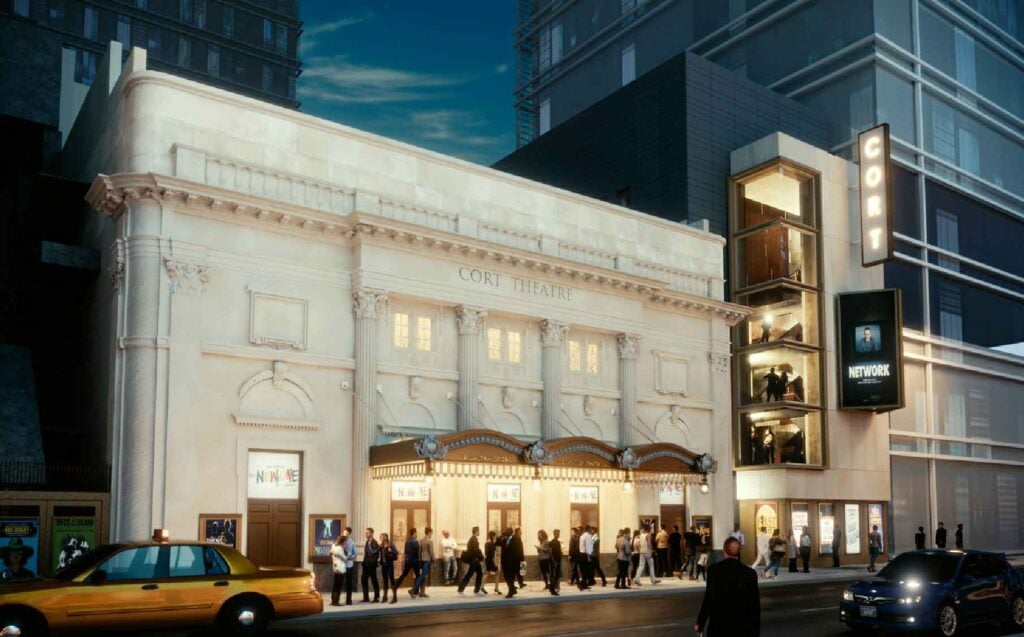
The James Earl Jones Theater, formerly known as the Cort Theater, was erected by John Cort. He, who was a member of the vaudeville comic duo Cort and Murphy, switched from acting to management in the 1890s. Two years before he passed away, in 1927, the Shuberts bought the theater.
The James Earl Jones Theatre is the only authentic, still-running Thomas Lamb-designed theater that is still open and on Broadway. The French Petit Trianon at Versailles from the 18th century served as an inspiration for its ornate façade.
The interior was similarly influenced by Louis XVI-era architecture. The lobby’s walls are made of Pavonazzo marble and include plasterwork by Marie Antoinette.
6. Winter Garden Theater
Date Established: March 10, 1911
Location: 1634 Broadway
Capacity: 1,526
Owned/Operated By: Lee and Jacob J. Shubert
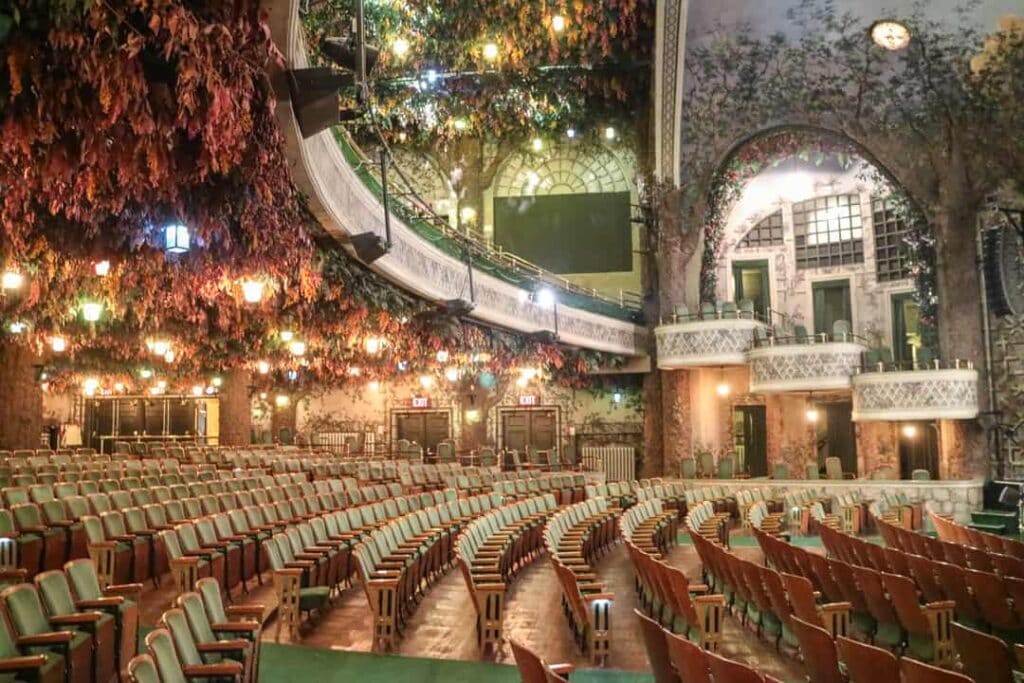
The Winter Garden Theater has been under Shubert’s ownership the longest of all its locations. When Longacre was the hub of the horse and carriage commerce, William K. Vanderbilt erected the second American Horse Exchange, which already houses the theater, in 1896.
Horses had been replaced by automobiles, and the legitimate stage had begun to spread north of 42nd Street by the time the Shuberts leased the Exchange in 1911.
In 1911, the Winter Garden underwent a theater conversion. From 1928 to 1933, it was leased by Warner Brothers, and again in 1945, it was run by United Artists.
Did You Know?
Only two performances, the musicals Cats and Mamma Mia, were presented at the Winter Garden between 1982 and 2013.
5. Lunt-Fontanne Theater
Date Established: January 10, 1910
Location: 205 West 46th Street Manhattan
Capacity: 1,519
Owned/Operated By: Stahl Organization and Nederlander Organization
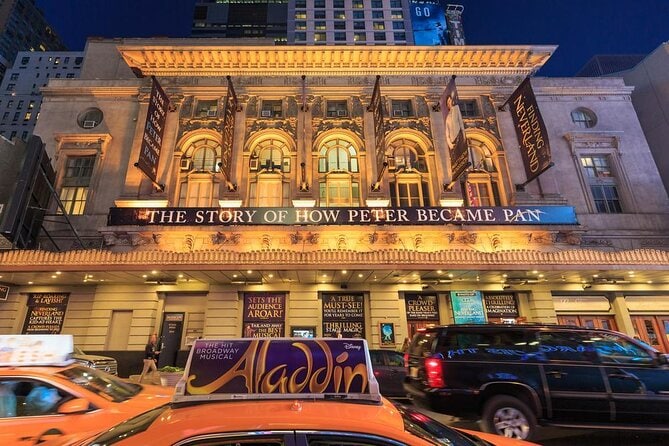
The Lunt-Fontanne Theater, created by Carrère and Hastings in the Beaux-Arts style for Charles Dillingham, debuted in 1910. The Globe Theater in London served as the model for the theater’s original name, which was Alfred Lunt and Lynn Fontanne, a married acting pair.
Many of the early plays at the Globe, including those by Dillingham, were revues and musicals. In the 1930s, the Brandt chain transformed The Globe into a movie theater. Prior to its reconfiguration, the auditorium had three floors and box seating. The ceiling of the theater and the tiled roof were both built with retractable parts, although they are no longer in use.
Did You Know?
In the theater’s foyer, there is a modest exhibit of personal photographs of Alfred Lunt and Lynn Fontanne.
4. Belasco Theater
Date Established: October 16, 1907
Location: 111 West 44th Street Manhattan
Capacity: 1,016
Owned/Operated By: The Shubert Organization
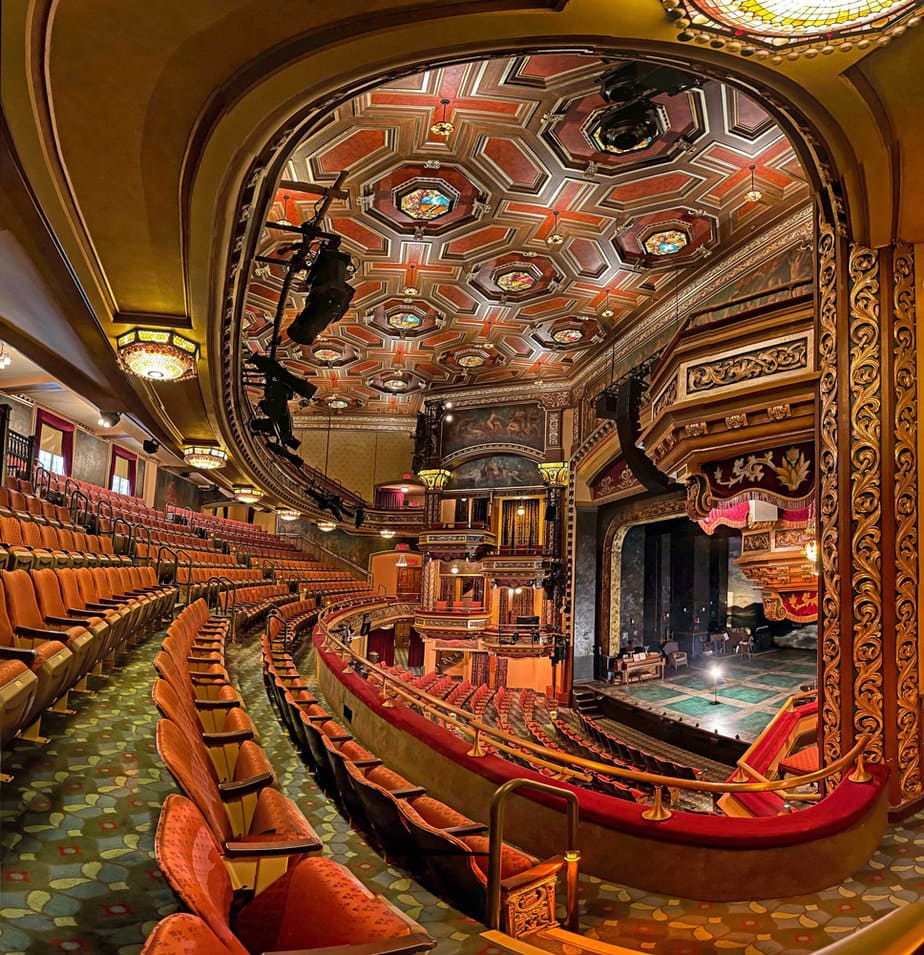
The Shubert Organization has been in charge of running the Belasco Theater since 1948. It has 1,016 seats spread out over three floors. The entryway is located on the bottom floor, whereas the top stories are asymmetrical and capped with a pediment.
The theater’s western wing housed the offices of Belasco and his business. The eastern wing’s top floor is home to a ten-room duplex penthouse residence where Belasco kept his collection of artifacts. A popular urban myth states that David Belasco’s spirit haunts the Belasco Theater every night.
Did You Know?
The Belasco Theater continued to present Broadway plays and musicals until the late 20th century, despite a decrease in the caliber of the shows it sponsored. Over the years, the theater has undergone several renovations.
3. Lyceum Theater
Date Established: November 2, 1903
Location: 149 West 45th Street Manhattan
Capacity: 922
Owned/Operated By: The Shubert Organization
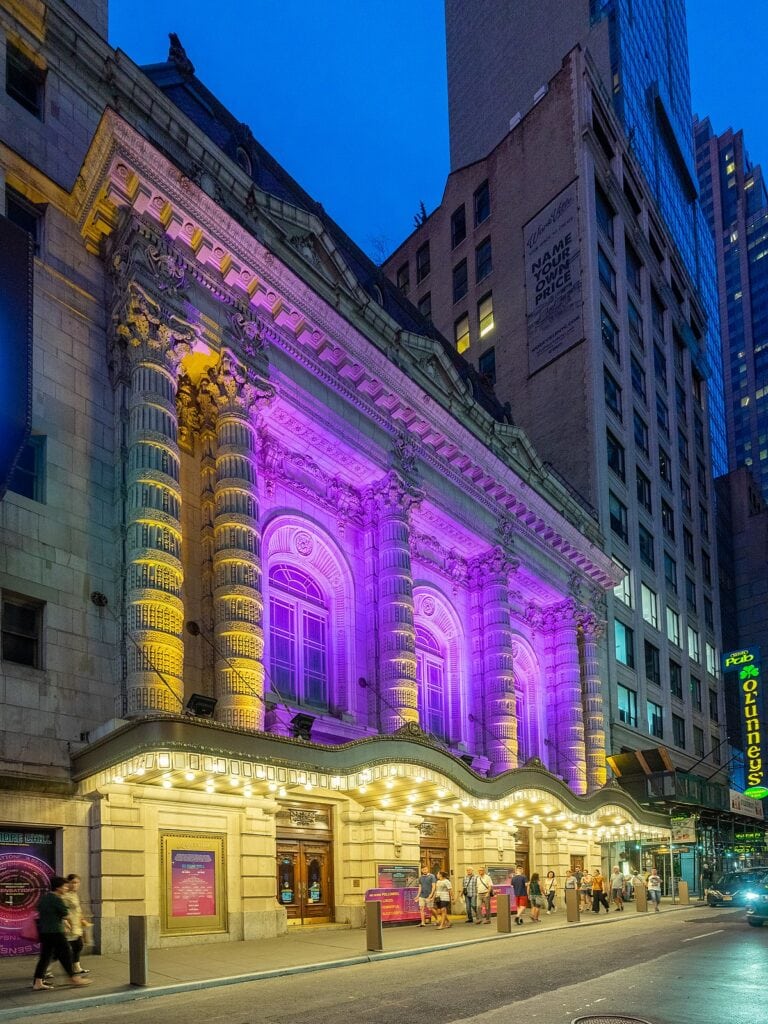
One of the oldest continuously running genuine theaters on Broadway is the Lyceum. A group of producers that included George S. Kaufman and Moss Hart bought the property in 1940 after it was built by producer-manager David Frohman in 1903. The Shuberts acquired the theater’s ownership in 1950, and they have run it ever since.
The theater has been run by The Shubert Organization since 1950. In the late 1960s and early 1970s, the Association of Producing Artists (APA) and Phoenix Theater rented the Lyceum, and throughout most of the 1990s, the National Actors Theater did, too.
Did You Know?
Most of the theater’s original Beaux-Arts architecture remains, including its ornate marble stairs and arching marquee.
2. New Amsterdam Theater
Date Established: October 26, 1903
Location: 214 West 42nd Street Manhattan
Capacity: 1,702
Owned/Operated By: Government of New York City, Disney Theatrical Group
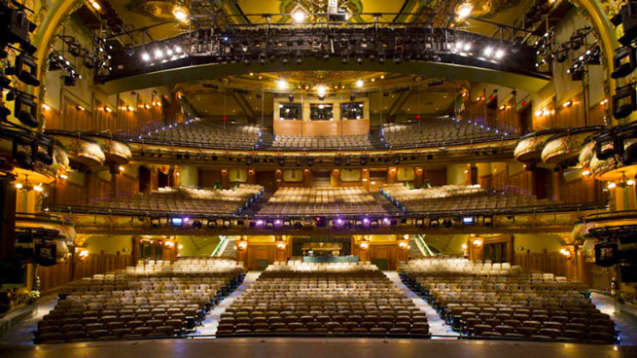
Herts & Tallant’s plans were used to construct New Amsterdam between 1902 and 1903. The theater has 1,702 seats spread out across three floors and is run by Disney Theatrical Productions.
The building, which is listed on the National Register of Historic It is a landmark of New York City with a Beaux-Arts façade and an Art Nouveau interior.
The Dutch town of New Amsterdam, which served as the model for New York City, inspired the name of the New Amsterdam Theater. Following its debut on October 26, 1903, the theater was run by Klaw and Erlanger for more than three decades.
The New Amsterdam Theater was considered for conversion into a dance complex in 1977 by the 42nd Street Development Corporation, a group established in 1976 to discuss ideas for redeveloping Times Square.
The same year, the City University of New York’s Graduate Center held an exhibition of images of the New Amsterdam and other theaters to promote the area’s restoration.
Did You Know?
The New Amsterdam was the last reputable theater when 1937 rolled around.
1. Hudson Theater
Date Established: October 19, 1903
Location: 141 West 44th Street Manhattan
Capacity: 970
Owned/Operated By: Millennium & Copthorne Hotels
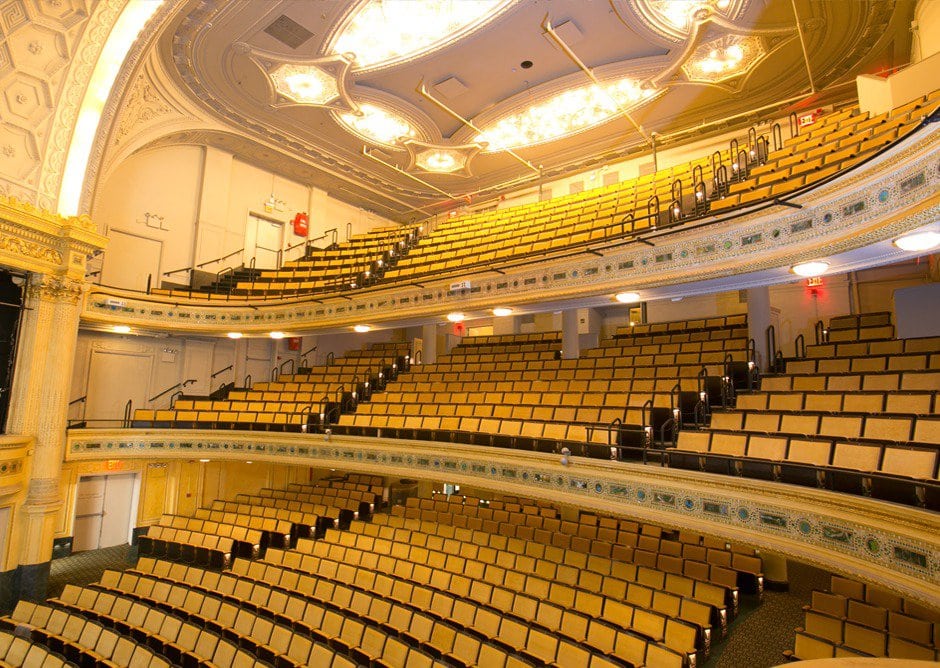
The Hudson, which debuted on October 19, 1903, is the oldest Broadway theater in New York. The youngest of a distinguished theater management family, producer Henry B. Harris developed and oversaw the theater.
When Harris died in the RMS Titanic disaster in 1912, his widow Renee took over as manager of the theater.
In the lobby, which was almost 100 feet long and 30 feet wide—unusual for the time—Hudson is famous for its exquisite triple-dome Tiffany ceiling that is illuminated.
Customers entered on 44th Street, while performers entered the Stage Door on 45th Street, making the entire establishment a full city block long.
The Hudson was renamed the Avon-Hudson in 1974 after it was converted into a theater showing adult films and placed under the control of the Avon theater company.
Did You Know?
The Hudson received a $7 million restoration to become a venue for business meetings, fashion displays, and product launches.


